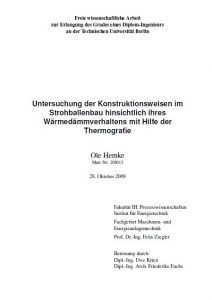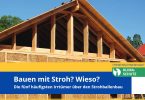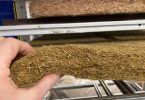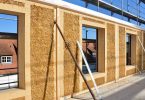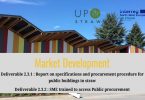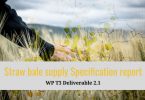This thesis analyses methods of building with straw bales with regard to their thermal insulation characteristics, using the technique of thermography. Internal and external thermographic measurements were therefore taken for nine straw bale houses located in northern and eastern Germany, made using different building techniques. The main focus was on wall design as well as on specific details of construction.
Within the framework of this thesis, an analysis was conducted to ascertain whether thermalbridges are created during the construction of straw bale houses that do not derive as a result of using straw as an insulation material but rather that depend on the processing techniques used when compressing or stuffing the straw bale walls and sealing them against the ingress of air and moisture. In addition, further testing was undergone to examine whether there are potential thermal bridges that have not occured under laboratory conditions or that have been neglected in prior theoretical examinations.
With the help of thermography, it was demonstrated that all the wall designs of the straw bale houses studied exhibited very good thermal insulation characteristics. Those constructions with posts on the insides of the straw bale walls and the load-bearing construction showed a slightly more homogeneous temperature distribution than the timber frame construction and the I beam construction.
In addition, the thermograms showed that for thermal insulation purposes the existing, relatively time-consuming efforts to compress, stuff and seal the walls against the ingress of air or moisture are justified. Critical thermal bridges, that only occured in exceptional cases, are likely to derive from processing defects which occur when sealing against the ingress of air. Provided that the sealing process is carried out correctly, timber that passes from the inside to the outside of a wall does not tend to exhibit critical thermal bridges. Problems concerning moisture were not discovered in any of the straw bale houses studied.
Author: Ole Hemke
Diploma thesis at Institut für Energietechnik, Technischen Universität Berlin
Date: 28. October 2009


